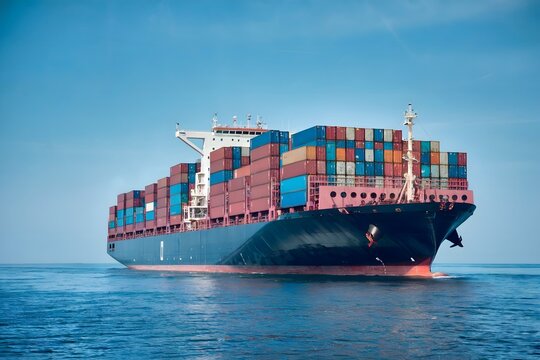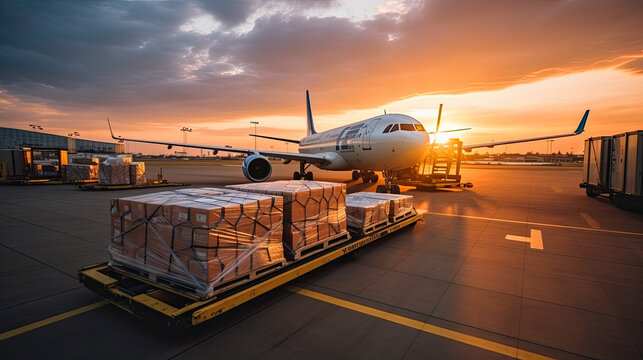- By Della tj
- September 16, 2025
- Sea Freight, Shipping
Sea freight from China remains the backbone of global trade, offering cost-effective solutions for importers managing large shipments worldwide. Because supply chains often face challenges such as rising shipping costs, customs delays, and unpredictable schedules, businesses rely on sea freight for reliable delivery. With proper planning, importers can balance cost, efficiency, and compliance while securing smoother global logistics.
What Makes Sea Freight from China So Important?
Global trade depends on sea freight due to its ability to transport massive volumes at competitive rates. Chinese ports such as Shanghai, Shenzhen, and Ningbo rank among the busiest in the world, linking factories to every major continent. As a result, sea freight provides importers with scalable logistics and predictable delivery timelines.
How Does Sea Freight Compare with Air and Rail Shipping?
Different modes of transport suit different needs. Air freight ensures speed but costs more, while rail freight balances transit and price across Eurasia.
| Shipping Mode | Average Transit Time | Cost Level | Best For | Advantages | Disadvantages |
|---|---|---|---|---|---|
| Sea Freight | 25–40 days | Low | Bulk cargo, containers | Affordable, high capacity | Slower, weather delays |
| Air Freight | 3–7 days | High | Urgent or high-value goods | Fast, secure | Expensive, weight limits |
| Rail Freight | 15–20 days | Medium | Eurasian shipments | Balanced speed and cost | Limited to inland hubs |
What Are the Main Shipping Routes for Sea Freight from China?
Shipping routes vary depending on the destination. Chinese ports offer frequent departures to North America, Europe, Africa, and Latin America.
| Destination | Main Route | Transit Time | Common Ports |
|---|---|---|---|
| USA (West Coast) | Pacific Route | 15–20 days | Shenzhen → Los Angeles |
| USA (East Coast) | Panama Canal | 30–35 days | Shanghai → New York |
| Europe | Suez Canal | 28–35 days | Ningbo → Rotterdam |
| Africa | Indian Ocean | 25–35 days | Guangzhou → Durban |
| South America | Pacific & Panama | 35–40 days | Qingdao → Santos |
Which Container Options Are Available in Sea Freight?
Container selection directly impacts cost efficiency. Forwarders help importers choose based on cargo size, type, and urgency.
| Container Type | Capacity | Suitable Cargo | Notes |
|---|---|---|---|
| 20GP | 28 CBM | Small bulk goods | Cheapest for medium loads |
| 40GP | 58 CBM | Large shipments | Lower cost per unit |
| 40HQ | 68 CBM | High-volume cargo | Taller for bulky goods |
| Reefer | Temp. controlled | Food, pharma | Keeps cargo at set temperature |
| Open Top | Oversized cargo | Machinery | Allows crane loading |

How Much Does Sea Freight from China Cost?
Costs depend on distance, container size, and carrier choice. Forwarders often provide competitive rates thanks to strong partnerships.
| Route | 20GP (USD) | 40GP (USD) | 40HQ (USD) |
|---|---|---|---|
| Shenzhen → Los Angeles | $3,200 | $6,200 | $6,300 |
| Shanghai → Hamburg | $3,400 | $6,600 | $6,700 |
| Ningbo → Dubai | $2,800 | $5,500 | $5,600 |
| Guangzhou → Durban | $3,600 | $7,000 | $7,100 |
What Documents Are Required for Sea Freight from China?
Correct paperwork is crucial for customs clearance. Freight forwarders assist with documentation to avoid shipment delays.
| Document | Purpose |
|---|---|
| Bill of Lading | Confirms contract with carrier |
| Commercial Invoice | Declares cargo value |
| Packing List | Details quantity and weight |
| Certificate of Origin | Proves manufacturing country |
| Customs Declaration | Required by authorities |
Can Importers Choose Between FCL and LCL Shipments?
- FCL (Full Container Load): Best for large cargo, provides cost savings per unit and minimizes handling.
- LCL (Less than Container Load): Ideal for small shipments that share space with other shippers.
| Option | Best For | Pros | Cons |
|---|---|---|---|
| FCL | Large cargo | Secure, faster, cost-efficient | Higher upfront cost |
| LCL | Small volumes | Flexible, affordable for small loads | Possible delays, extra handling |

Real Case Studies
What Are the Pros and Cons ?
| Pros | Cons |
|---|---|
| Lowest cost per unit | Long transit times |
| Handles large cargo volumes | Weather-related delays |
| Wide global coverage | Customs paperwork required |
| Flexible container types | Port congestion risks |
Why Use Freight Forwarders for Sea Freight from China?
Freight forwarders simplify logistics by negotiating with carriers, consolidating shipments, and handling customs. They offer expertise that reduces risks while ensuring reliable schedules. Additionally, their global partnerships provide importers with door-to-door solutions.
Conclusion
Sea freight from China remains the most cost-effective way to move goods internationally. With multiple container options, global routes, and professional forwarder support, businesses can ensure timely and affordable deliveries. By choosing experienced partners, importers reduce risks, secure competitive rates, and achieve stable supply chains.
- Consult TJ China Freight Forwarding for the lowest quote. They will provide you with reliable, cost-effective service.
FAQs
Q1.How can I calculate sea freight from China to my country?
Use freight forwarder cost calculators comparing container size, port, and shipping season for accurate sea freight from China.
Q2.What customs duties apply to sea freight from China?
Duties depend on HS code, product type, and destination country regulations; forwarders help estimate total landed shipping costs.
Q3.Can sea freight from China include last-mile delivery?
Yes, many forwarders offer door-to-door sea freight from China, covering inland trucking, customs clearance, and final delivery.
Q4.How do peak seasons affect sea freight from China?
During Chinese New Year and Golden Week, sea freight costs rise, schedules tighten, and advanced booking becomes essential.
Q5.What are hidden charges in sea freight from China?
Possible hidden charges include port handling, customs inspection, documentation, and demurrage fees; forwarders provide transparent rate breakdowns.




